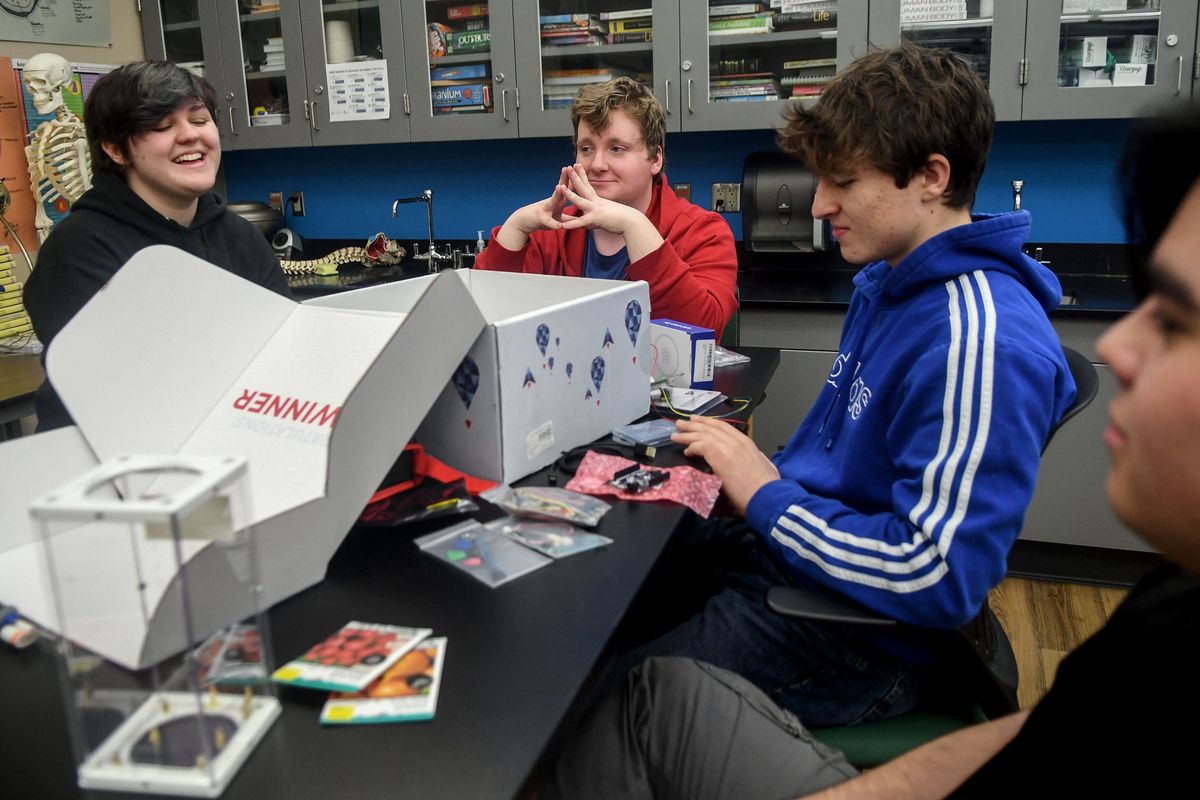Students from Spokane Valley Tech win NASA Techrise Challenge

When Spokane Valley Tech teacher Lori Buratto heard about NASA’s TechRise Student Challenge, she knew she wanted to get her students involved.
The nationwide contest for sixth- to 12th-graders is designed to engage students in technology, science, and space exploration. This year’s challenge was to design an experiment that could be tested on a NASA-sponsored high-altitude balloon flight.
“I wanted an engaging hands-on project,” Buratto said. “I really like having students compete because I get to be beside them, working with and encouraging them.”
Led by NASA‘s Flight Opportunities program and administered by Future Engineers, TechRise offers students both hands-on experience with the payload build and flight test process, and the chance to contribute to NASA‘s mission of exploring space and studying our planet.
NASA selected 60 winning teams. The teams will work together to build science and technology experiments in preparation for a suborbital flight test.
Buratto was shocked to find out one of Spokane Valley Tech’s teams had won.
“We were so surprised,” she said. “We’re just a little tech school in the Valley doing our thing.”
The five team members watched the announcement live via Zoom and saw their school was a winner. But the school had a couple of other teams enter, and it wasn’t until the end of the day that Burrato’s students found out they’d won.
“At first we thought we wouldn’t go far,” team member Christian Smildren said. “This is cool – it’s NASA.”
Teammate Tobi Townley christened their project “Radiation Levitation Experimentation.”
“I like things that rhyme,” Townley said.
The requirements for the challenge prohibited living organisms, but seeds were an exception.
“That gave us the idea to see how radiation in the atmosphere would affect seeds,” Townley said. “Last year, Jordyn (Stuart, a fellow team member) and I took environmental engineering. It got me interested in the aspect of seeds. This is a great opportunity.”
Each of the 60 teams received $1,500 to build their experiments, a flight box in which to build it, ongoing technical support from Future Engineers, and an assigned spot to test it on one of two NASA-sponsored high-altitude balloon flights scheduled for this summer.
Last week, the students went through the box of supplies they received from NASA.
Paul Komarov eyed a microcontroller that came in the box.
“It’s an Arduino board,” he said. “It does the coding. I’m planning on writing some code.”
“I’ve enjoyed science ever since I was a kid, but this is something new. I’m going to have to learn a lot!”
The cash they won will be used to purchase other items needed for the experiment.
“We’re going to measure how long the seeds are exposed to radiation,” Nicholas Espana said.
“Then we’re going to grow the seeds when they return. That’s how we’ll see the effect of the radiation.”
But there’s a lot of work to be done before their radish seeds take flight.
“I’m so proud of the kids. Turns out NASA is somewhat demanding. They have weekly Zoom mentor meetings and the students are doing a lot of extra work to accomplish the tasks set by the mentors,” Buratto said. “I know there will be struggle, frustration and potentially some conflict. Learning to sort through those things is nearly as valuable as the engineering and programming skills.”
For now, the students are already dreaming about the potential of their project.
“I hope the research we do will help NASA and other organizations with potential space colonization,” Smildren said.